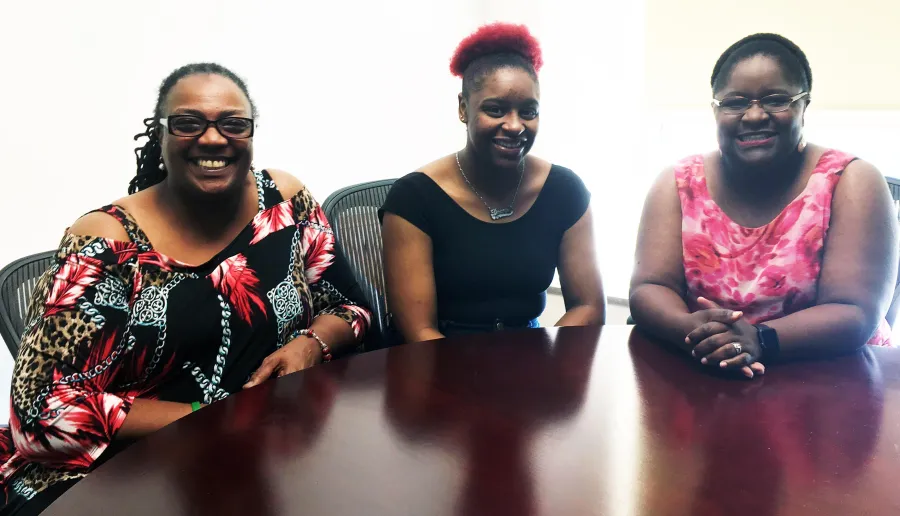Op-Ed: Equal Pay and Equal Say

Originally published in CT News Junkie, March 5, 2017.
March is Women’s History Month, when we honor the vital role women have played in shaping our country. It’s a time for recognizing the strides we’ve made on gender equality and for resolving to correct the injustices that persist.
Women’s rights and worker’s rights are closely intertwined in American history. Women have been an important part of the labor force throughout human history and have been at the forefront of efforts to improve conditions in the factories and mining towns of the 19th and 20th centuries. Some of our boldest change-makers have been women who championed workers’ rights. I’m thinking of leaders like Mary Harris “Mother” Jones, the pioneering labor advocate, and Frances Perkins, the U.S. Labor Secretary from 1933-45 (and the first woman to serve as a cabinet secretary), who gave a powerful voice to the injustices of their day.
I’m also thinking of a woman named Lilly Ledbetter, who worked for Goodyear Tire & Rubber Co. for 19 years and retired in 1998. When she found out she had been paid considerably less than her male counterparts despite doing the same work, she sued the company. In 2007, the U.S. Supreme Court ruled against her on a technicality.
The ruling sparked outrage, and a bill was introduced in Congress, and signed into law by President Obama in 2009, to make it easier for victims of wage discrimination to challenge unequal pay. The bill became known as the Lilly Ledbetter Fair Pay Act.
Our society still has a long way to go to achieve fair compensation for women and an end to wage discrimination. Women currently make 80 cents to the dollar a man earns. African-American women make 60 cents and Latino women make 55 cents for every dollar a white, non-Hispanic male makes.
These wage disparities are unacceptable and perpetuate the cycle of inequality and poverty. Working just as hard, if not harder, while earning less is not only unjust, it represents another barrier to being able to take care of our families, afford quality child care, pay off student loans, or to purchase a home or car.
Recent analysis show that equal pay would cut poverty among working women and their families by more than half and add $482 billion to the national economy. I carry around one of the best solutions to the income inequality I’ve witnessed in my community and my state: a union card. According to the U.S. Department of Labor, union women earn an average of $928 weekly, compared to $697 for non-union women. That’s a nearly 25 percent difference.
For the last 19 years, I’ve worked as an administrative assistant at Southern Connecticut State University in New Haven. I enjoy serving the students who are beginning a new chapter in their lives and being part of a broader campus community where minds are stimulated to grow.
In my capacity as a union leader and activist, I’m privileged to help empower my fellow clerical members to make progress in their professional mobility as they help SCSU fulfill its educational mission. My own experience in public service, and as an AFSCME union member, serves to remind me of the proud but often unrecognized role that women have played in our American work-life.
The playing field is far from level. Statistics show that minimum wage earners — working in restaurants, at airports, as home health aides, and more — are disproportionately women, many of them single mothers and the sole breadwinner of their households. My union and others are committed to supporting these workers in organizing drives and legislative campaigns, but we can’t ignore the grave threats to women’s and workers’ rights around the country, including “Right to Work for Less” and other laws that drive down wages and benefits and silence our voices on the job.
Since we came razor close to electing a woman to our nation’s highest office, it’s perhaps fitting that women led the largest gathering to date of people in opposition to President Trump’s divisive and misguided rhetoric.
If Women’s History Month reminds me of anything, it’s the importance of staying loud and staying proud in the continuing struggle for equal pay and equal say.
Cassandra Lang is President of AFSCME Local 478, representing state administrative-clerical workers. Local 478 is an affiliated union of Council 4 AFSCME, which represents 35,000 hard-working employees across Connecticut. Council 4 can be reached on Facebook and through its Campaign4MiddleClass on Twitter @C4MC. Sign up for email updates from Council 4 here.
DISCLAIMER: Council 4 AFSCME is a member of CTNewsJunkie’s Directoryand as such is included among the sponsors of this website. The views, opinions, positions, or strategies expressed by the author are theirs alone, and do not necessarily reflect the views, opinions, or positions of CTNewsJunkie.com.
